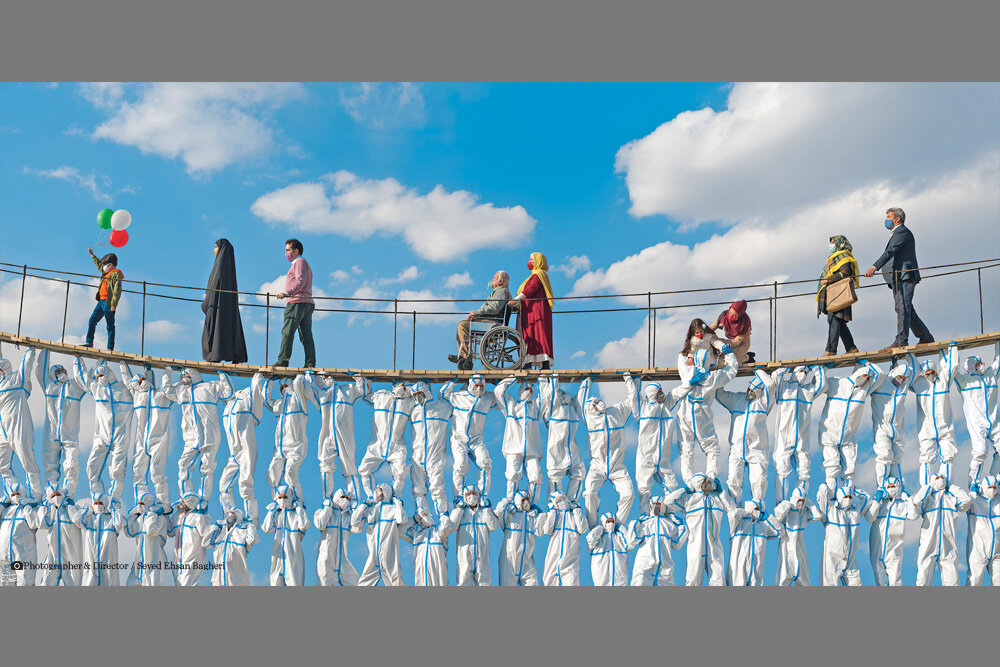National Doctors Day: let’s appreciate health advocates

TEHRAN – Iran marks the birth anniversary of Abu Ali Sina, known in the West as Avicenna, as the National Doctors Day, to appreciate the efforts of medical staff and health advocates.
Avicenna, born 980 CE in a village near Bukhara, then capital of the Iranian Samanid Empire, was a great Iranian philosopher, physician, and scientist who had some 450 books on a wide range of issues, among them medicine and philosophy. As a result of efforts by such pioneers as Avicenna, Iran is now among the 12 countries with advanced technology and knowledge in medicine and can serve as a health tourism center.
He was a polymath regarded both in the West and East as one of the most significant thinkers and writers of the Islamic Golden Age.
Iran honors top doctors and physicians who have made great contributions to the country’s health system on National Doctors Day, celebrated annually on August 23.
Despite their hard work, Iranian doctors have been struggling with the coronavirus for 552 days.
Since March 25, 2020, it is reported that 300 healthcare workers in the country have lost their lives due to the coronavirus infection, according to Mohammad Reza Zafarghandi, head of the Medical Council of Iran.
According to the statistics, 160 doctors were among those 300 medical staff who have lost their lives fighting the coronavirus pandemic.
The healthcare workers who lost their lives in the fight against coronavirus are called martyrs of health.
Although, physicians and doctors have been recognized for their selfless devotion and efforts to public health. Working around the clock, fighting at the frontline against the pandemic, putting their lives in danger made us salute and admire these exceptional caregivers.
The sacrifices made by the medical staff to treat the coronavirus patients are indescribable, when all their relatives were forced to leave them, the medical community stood still that many of them even lost their lives.
Health sector growth
After the Islamic Revolution (1979), many advances have been made in the health sector, namely, increased medical facilities, increased life expectancy and reduced infant and maternal mortality, growth of medical universities, and upgraded medical equipment.
Before the Islamic Revolution, there were about 558 medical institutions with 57,927 beds in the country, which was insufficient in comparison to the country's population.
Meanwhile, after the fourth decade of the Islamic Revolution, primary health care (PHC) has reached a coverage of 93 percent for the urban population and over 97 percent for the rural residents. At the same time, the establishment of the health care network system as a global model has taken place with more than 31,400 Health Houses and 7,400 healthcare centers.
Moreover, the distribution of hospitals in different provinces and regions demonstrates the observance of health justice in all parts of the country.
Before the Revolution, there were only a limited number of physicians for the entire population of 36 million in Iran, so all the cities of the country and the country's villages were suffering from the lack of doctors and specialists in 1,500 rural health centers.
The number of physicians in the country, including general practitioners and specialists in various fields, amounted to about 14,000, while a significant number of them were foreign physicians. So, there were still about 9.3 physicians per 10,000 people.
According to the World Bank, the physician-to-population ratio improved six-fold in the post-revolutionary period.
Also the specialized physicians were 7000 in 1979 who reached up to 72,792 in 2017, and it is noteworthy to say that people from many countries travel to Iran to receive treatment from Iranian physicians.
Before the Islamic Revolution, four medical faculties were established in universities, but now there are about 59 medical universities across the country.
The number of medical students increased from 600 to 3,000 a year, after the Revolution.
Before 1979, there were about 50 manufacturing companies in the field of medical equipment across Iran, all of which imported raw materials from abroad and assembled them inside Iran. These companies were only able to supply 3 percent of the domestic needs.
According to the statistics in 2017, medical equipment companies reached 500, which supplied over 80 percent of hospitals' needs across the country, producing more than 8,000 types of medical equipment and supplying them to domestic and foreign markets.
Health sector’s share in national budget
Some 15 percent of the national budget for the current Iranian calendar year (started on March 20) has been allocated to the health sector, deputy health minister Kamel Taqavinejad has said in April.
The national budget bill has proposed 1.5 quadrillion rials (around $35 billion at the official rate of 42,000 rials) for the healthcare system, a more than twofold increase compared to the last year’s budget of 700 trillion rials (nearly $16 billion).
Last year, despite all the constraints on funding, was a successful year for the Ministry of Health and the universities. This year, with the efforts made to increase the budget this year, good capacity has been predicted for medical universities, Taqavinejad said.
The health system accounts for approximately 15 percent of the total public budget. Over 90 percent of the health system’s budget is provided from government and public resources and 10 percent from private resources, which are gained from the health system and hospitals, he explained.
FB/MG

Leave a Comment